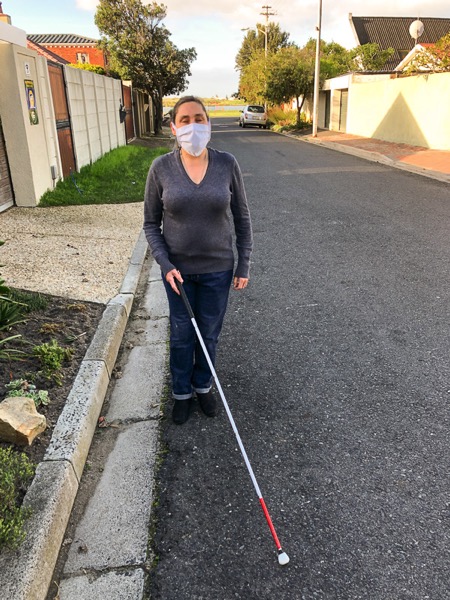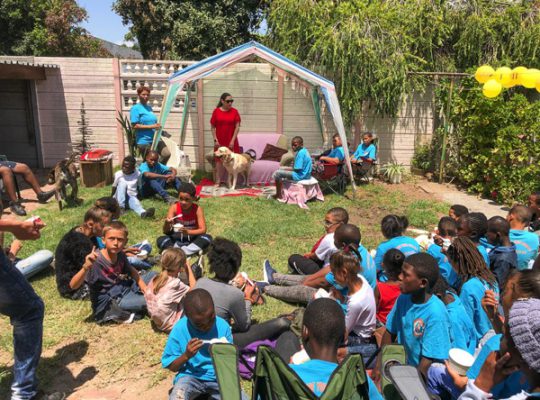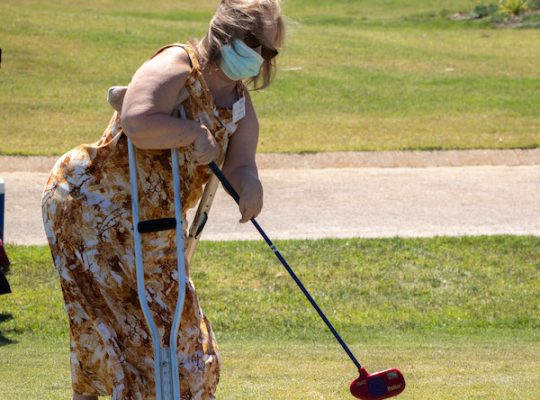
As we all continue to experience the challenges of lockdown, social distancing is becoming almost a regular part of our lives. But have you thought about the challenges social distancing poses for someone who is blind or visually impaired?
A few weeks ago, my guide dog, Fiji, wrote a guest blog on my Beyond Sight Blog about her feelings about social distancing. Yes, it was a somewhat tongue-in-cheek perspective for me to share, but the challenges are real – and not just for guide dogs!
Here’s how I experience social distancing, and some of the ways you can help me, and people like me, to ensure we keep safe when we’re out and about.
If I’m walking along a busy road and there is masking noise, like passing cars or wind rustling tree leaves, I might not hear you approaching. So, I might get closer to you than is safe. It would really help me if you could recognise that I might not be able to take evasive action– either make a sound so I know you’re there, or take the initiative and ensure we are a safe distance apart.
The painted lines in shopping queues are invisible to me and my white cane (or my guide dog) Unless you’re aware of a shopping centre that has created tactile lines, I have no way of knowing where the marks are. It would really help me and my guide dog if you can give us verbal guidance of where we should stand, and when we can move forward.
Never before has the #JustAskDontGrab Campaign been so important for the visually impaired community. I, like most of my blind friends, have countless stories of people grabbing us in order to attract our attention, or in order to move us physically. Nowadays that is simply not a safe option. We need people to speak to us when offering help.
Yes, there are technologies we can use to help us maintain social distancing. I could use the Be My Eyes app and ask a sighted volunteer to help me navigate safely. Or I could make use of a Sunu Band, a band that is worn on the wrist and gives tactile feedback when I’m approaching something. Or someone. Both are options for me.
But let’s be honest, I’m not keen to wave around my iPhone when I’m out and about in public. It’s just asking for trouble. And the cost of the Sunu Band puts it out of reach of most blind and visually impaired South Africans.
Which means we have to do the best that we can using our own skills and the help of those around us. People like you.
So, next time you see Fiji and I walking down the road, please speak to us to let us know where you are, and be willing to step out of our way as we walk past. Next time you spot me in the queue at Blue Route Mall with my white cane, speak up and let me know how to move from one painted line to the next as the queue progresses. And please, please don’t reach out and grab for Fiji or myself to guide us – ask us what form of help will be most safe and most comfortable for us all.
Thank you – Fiji and I really appreciate your thoughtfulness!






I would speak to you both any day!
I completely agree with what you say in your article.
Totally agree with you Lois.
When I see a person might need help I normally ask the person: ” How do you want me to help you?” / ” Do you need help? How can I help you?”
A person must not walk up to me ( and I’m not aware of the person next to me) and touch me. I’ll get a fright and all my muscles will spasm. Rather tell me: ” Marthe-Marie I’m here. Do you need help? How can I help you?
That’s excellent advice, Lois. Thanks for sharing!
Thank you Lois for telling your stories to increase awareness. CoViD has been a game changer for us.